6 French drain alternatives – and why a common tree could be a secret solution for waterlogged lawns
These French drain alternatives could be a smarter way to fix your garden drainage
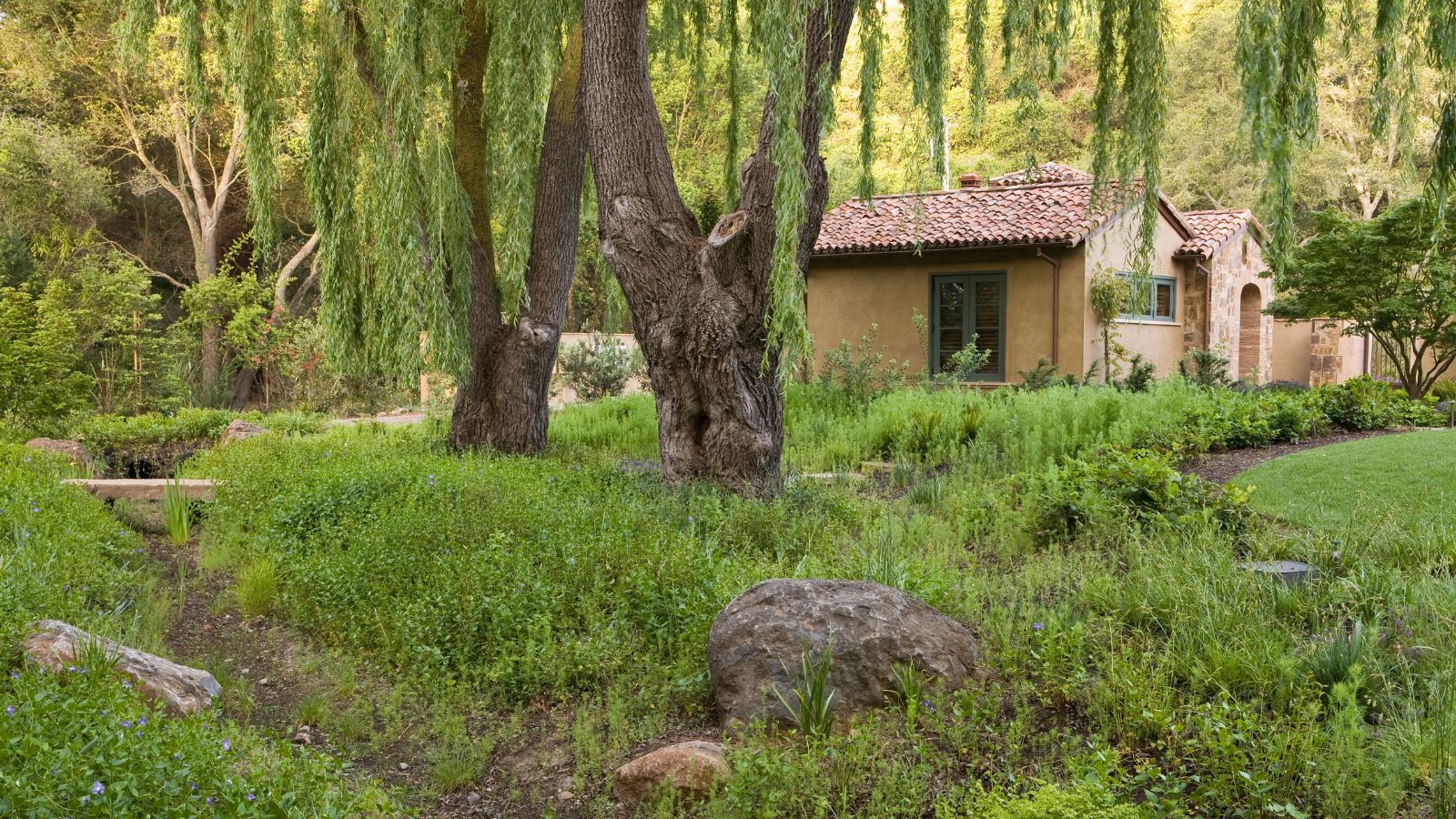

French drains saw a spike in popularity at the start of last year and the trend shows no sign of stopping. A cursory Google of this clever drainage solution will bring up dozens of forums of gardeners recommending French drains as the only solution for a waterlogged yard.
However, French drains aren't a miracle cure for garden drainage. They won't work at the top of slopes, they need somewhere to discharge, and they're expensive to install.
So, while a good French drain can be the perfect solution, there are a few alternatives to consider before you dig up your lawn.
What's the deal with French drains?
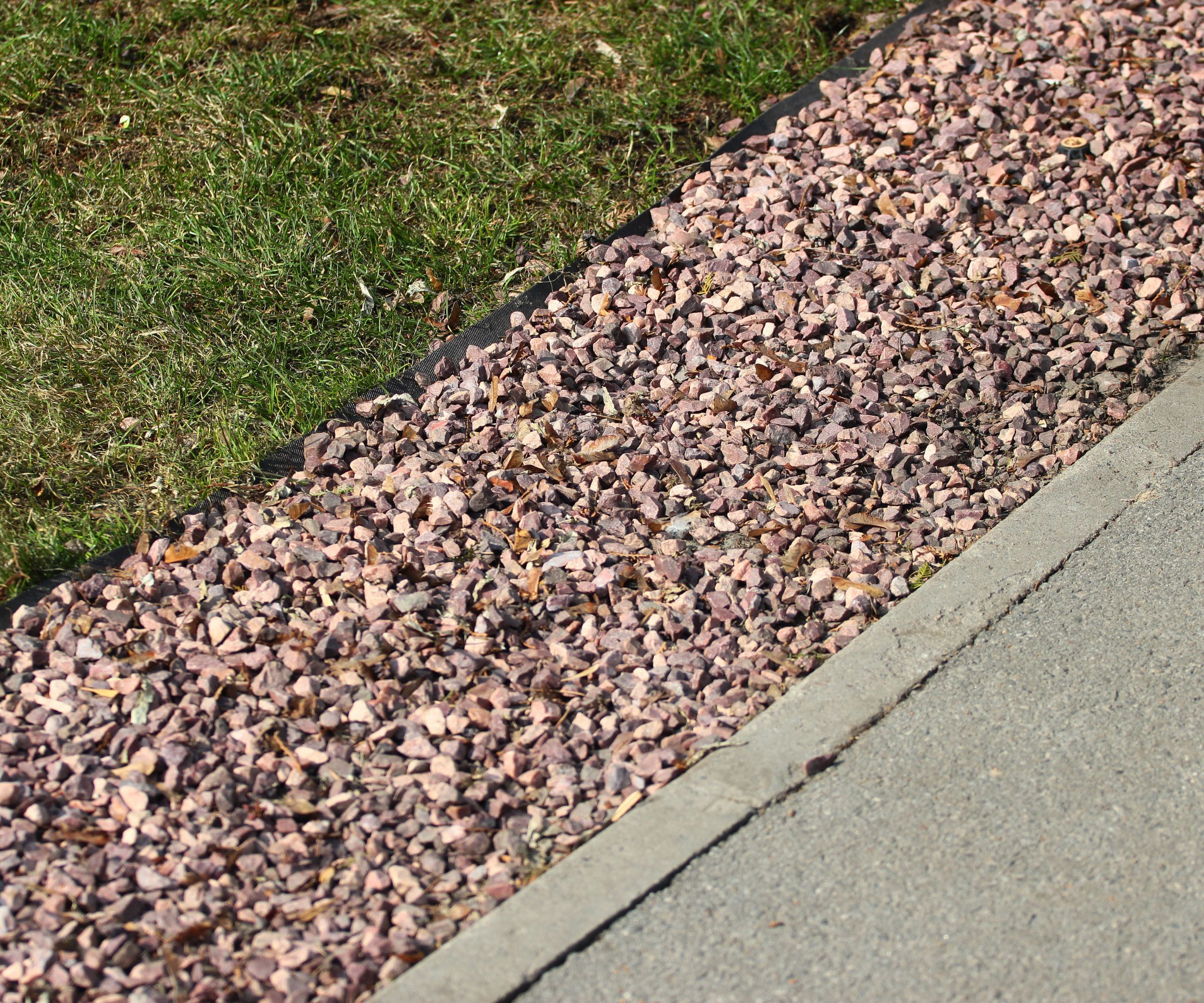
French drains are a popular solution to lawn drainage problems. This ingenious solution involves digging a trench and laying it with filter fabric and a perforated pipe, covered in gravel and turf. This creates a hidden drain that moves water away from a lawn, removing waterlogging.
Landscape expert Ryan Farley explains that 'French drains are great for providing some extra natural drainage for your yard, and can help prevent flooding or waterlogged soil without using electricity.'
However, Ryan says 'It depends on your individual situation.' French drains aren't always the solution for standing water in a yard, because they can't help with standing water on patios. Because they're submerged, they can be hard to fix if they clog. French drains can also be fairly expensive. They can't be installed at the top of slops, or near tree roots, and they need to be carefully planned so the water remains in your water and doesn't drain into a neighbor's garden.
This means that a French drain may not be the best solution to your drainage problems, so why not consider one of these six French drain alternatives.
Design expertise in your inbox – from inspiring decorating ideas and beautiful celebrity homes to practical gardening advice and shopping round-ups.

Ryan Farley is the CEO of LawnStarter, a lawn care service founded in 2013 and based in Austin, Texas.
1. Build a dry creek bed
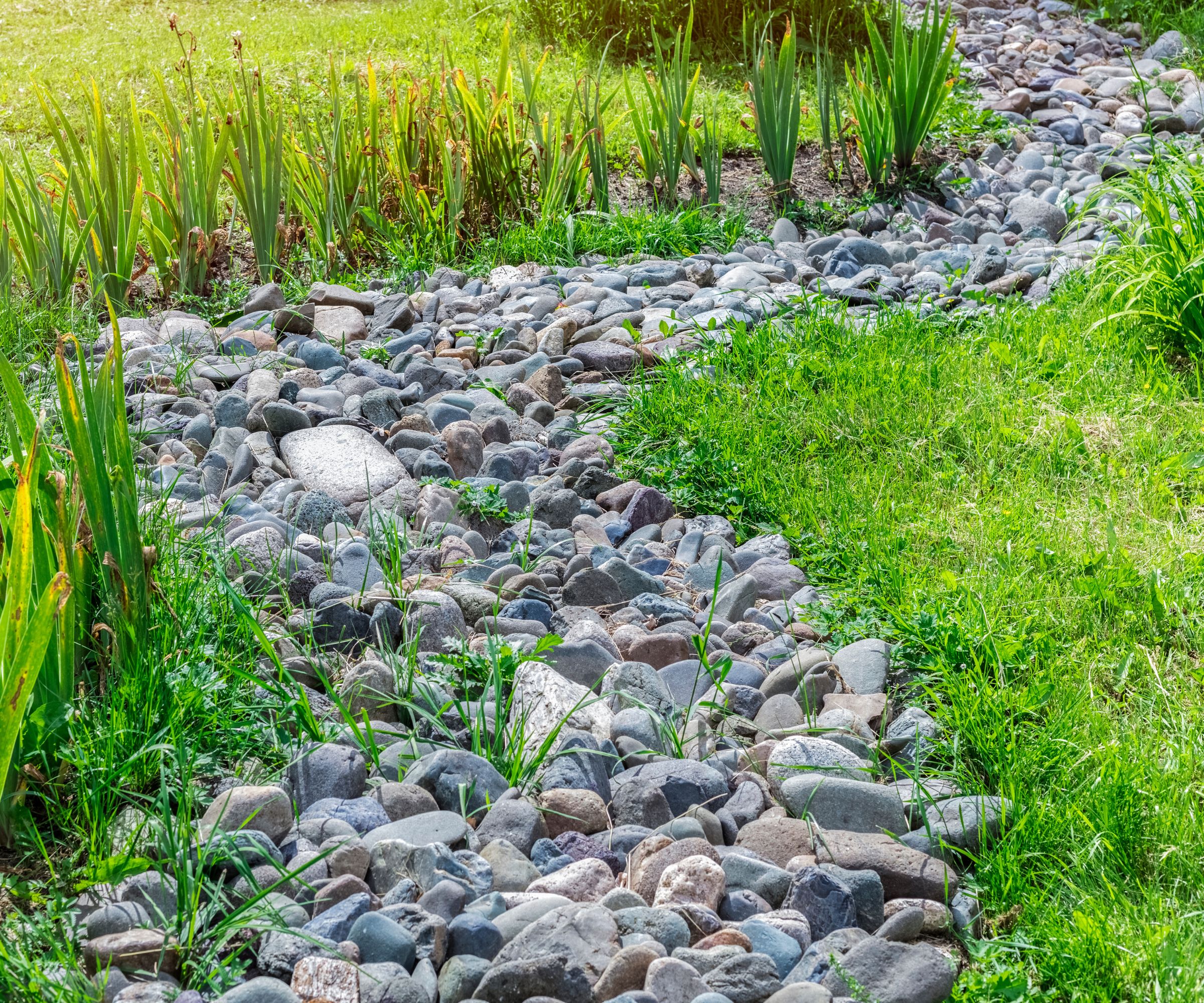
Dry creek beds are one of the cheapest alternatives to a French drain. You can think of a swale like a French drain without a pipe. Dry creeks are long trenches of gravel or rocks placed at the bottom of slopes. The idea is that these rocks filter excess water into the soil, unlike a French drain which will carry excess water off to a dry well or other water storage system.
However, dry creek beds won't work in every type of yard. The rocks slowly drain water into the soil, so they aren't always great at handling stormy weather. They also disperse water directly into the soil rather than move it away, so they won't help with standing water near a home's foundations.
Creek beds can easily clog with leaves and other debris in the fall, and on top of that, unlike a French drain, you can't cover them with turf, so you need to landscape them with water-loving rocky plants like reeds and rushes. This can look beautiful, but it doesn't work for every garden style.
2. Create a swale
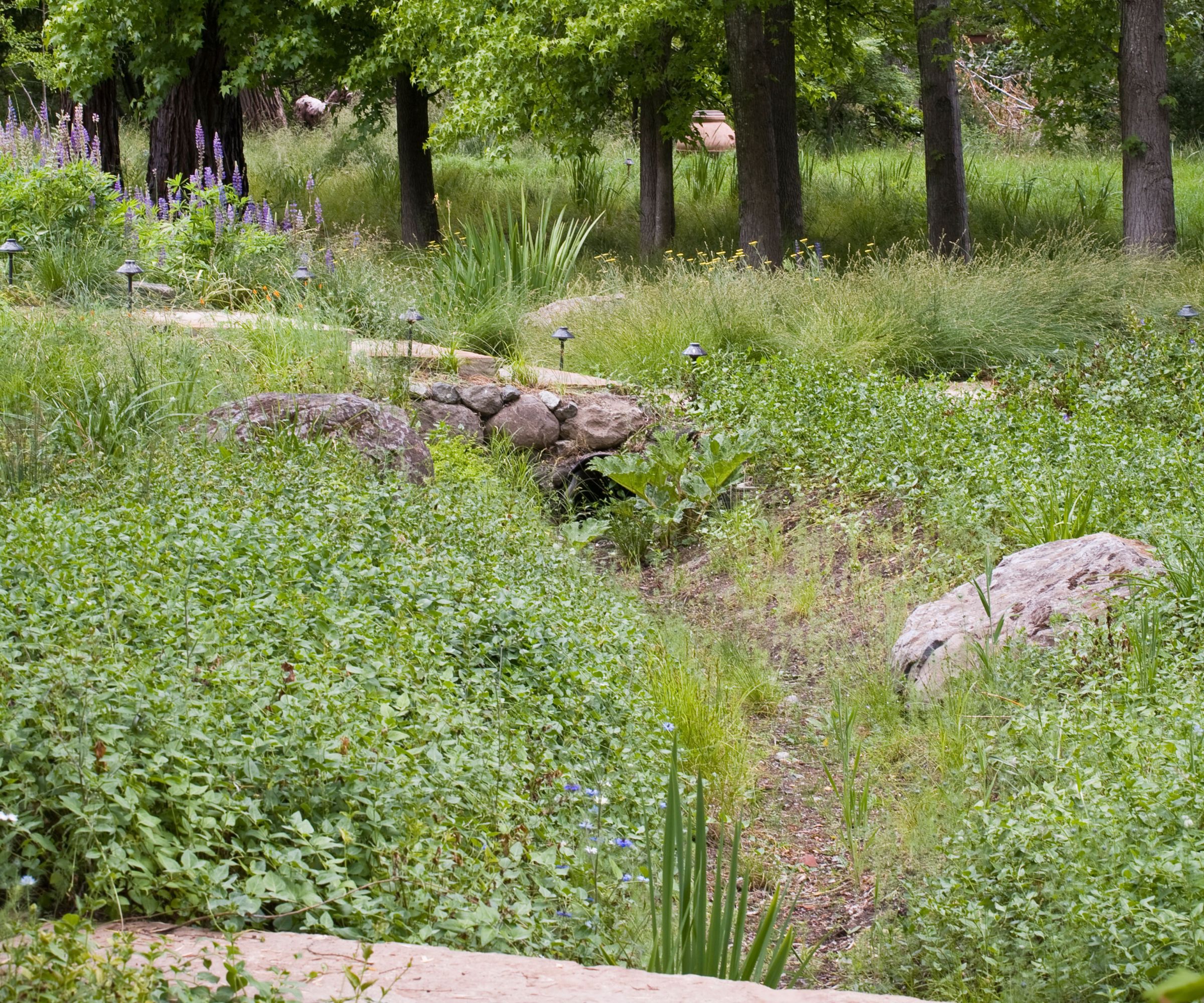
You usually see swales in commercial or residential planting, but you can also introduce them into a domestic yard. A grass swale is a shallow ditch lined with turf. Done right, you hardly notice a grass swale - it's just a little ditch at the bottom of the yard. Grass swales are also simple to install - you just need to dig a ditch and line it with turf or native, water-loving plants.
Unlike a French drain, this isn't a deep ditch - it should slope at around 4%, so it's a relatively straightforward design. Any water will run off to drains at either end of the swale. This also makes swales easy to troubleshoot, because you can easily see any blockages at the drain hole, unlike French drains where the pipe is buried under rocks and turf. You can also plant grass swales with water-loving grasses, just like a dry creek bed.
The downside to grass swales is that they're best for dealing with stormwater runoff, not more everyday waterlogging. They can alleviate waterlogged lawns but not entirely solve them. While they're great for handling stormwater, they can look pretty ugly after heavy rain, as they'll turn into a boggy ditch. They also won't work for steep lawns, and they can be hard to DIY. A swale needs a wide, shallow trench, which can be a surprising amount of earth to shift without professionals.
3. Plant a willow

If you have a lot of standing water, one of the best natural solutions can be to plant willow or other moisture-absorbing trees. Willows consume a lot of water, so planting willow is a natural way to drain off some water from boggy ground.
On top of that, willow is easy and fast to grow. You can buy pot willows like this at Fast Growing Trees but all you need is a branch. A withy (branch) of willow planted into moist soil will quickly grow roots. In the best conditions, willows can grow up to 10 feet in a single year.
However, there are some big drawbacks. You need the right tree for your climate zone, but the major downside is that willows are so thirsty that they can suck up all the moisture from your other plants. This can inhibit their growth, particularly impacting yields of fruits and vegetables.
Because willows are so quick to grow, they can quickly become invasive and hard to remove from the yard. Willows also grow masses of thick, sturdy roots, and if you grow them too near to a house or drains you could wind them undermining your foundation or pipes.
4. Consider making a rain garden
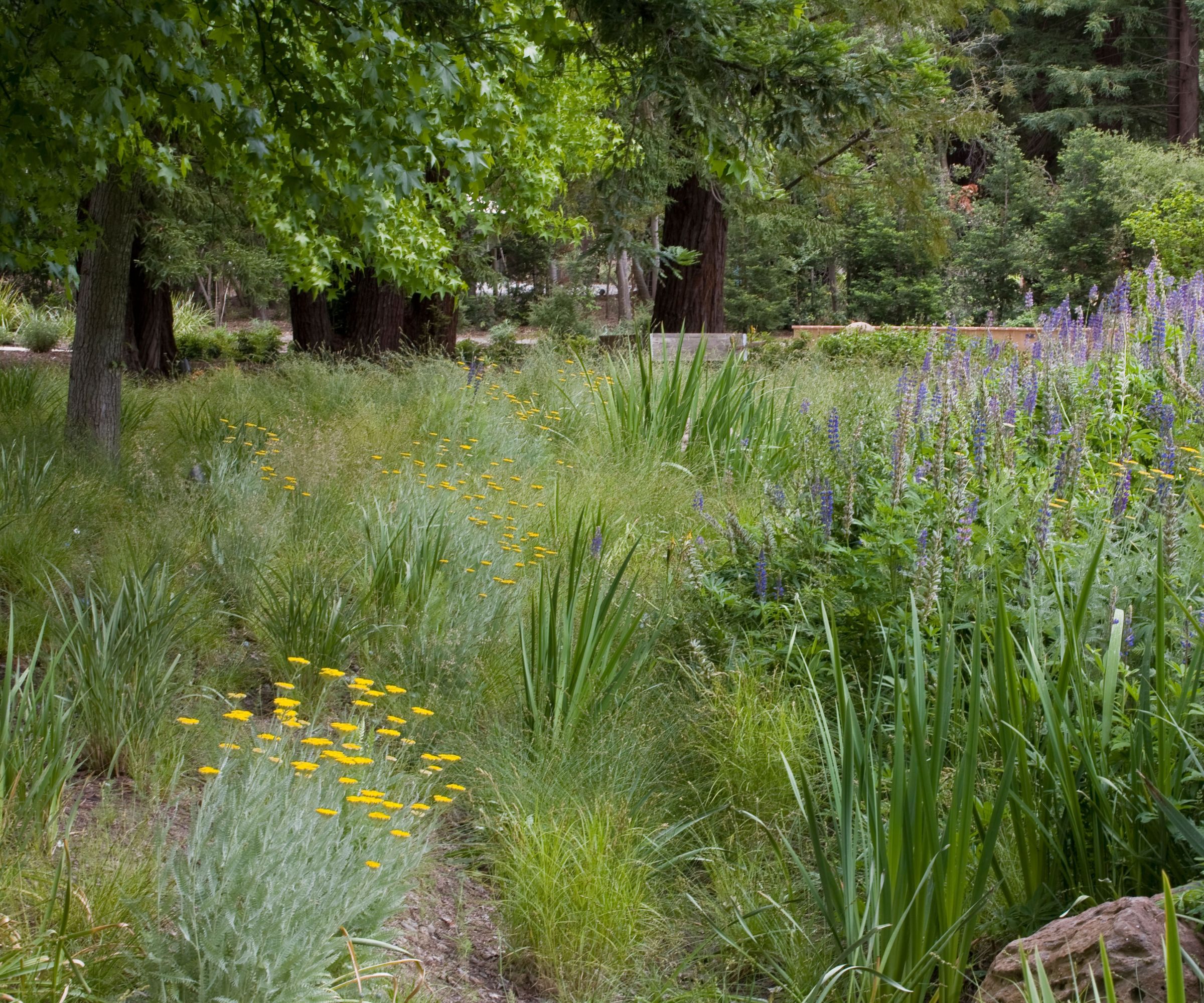
Rain gardens are plantings designed to handle roof runoff. The idea is that you plant an area of your yard with water-loving plants, creating a boggy area that can capture rainwater and slowly filter it back into the soil, preventing water from overwhelming drains or pooling on patios and lawns. This is probably the best-looking option on this list, and an opportunity to create a beautiful planting of water-loving plants.
However, rain gardens are primarily a way of dealing with roof runoff, not waterlogging. They stop too much water from being diverted to public drains. While this can certainly help a waterlogged garden, capturing water that could otherwise end up on your lawn, rain gardens can't solve the issue by themselves.
If you have very heavy clay soil as is found throughout the South, a rain garden won't solve the issue. In this case, you need to introduce mulch to the soil or a French drain to help move the excess water.
5. Install a dry well
Dry wells are another way of capturing rainwater. You can think of them like buried rain barrels. They're huge, underground stores of stormwater that collect gallons of water and slowly release it into the soil. This reduces waterlogging because it removes the water from the surface of the lawn and slowly releases it further underground. You can also place a dry well in a disused corner of a yard, so if you're still worried about waterlogging you'll know that it's happening away from the main lawn.
However, you needn't think of French drains and dry wells as opposite solutions. In fact, you can combine the two, and hook a French drain up to a dry well. The drain will move standing water away from the lawn and into the well, where it will slowly disperse back into the soil.
This can be an excellent drainage method as it prevents waterlogging and keeps the water within your yard, preventing any potential disputes with neighbors and ensuring your soil gets all the hydration it needs for healthy plants. The only drawback is the cost - this dry well kit at Home Depot costs almost $500.
6. Add a trench drain
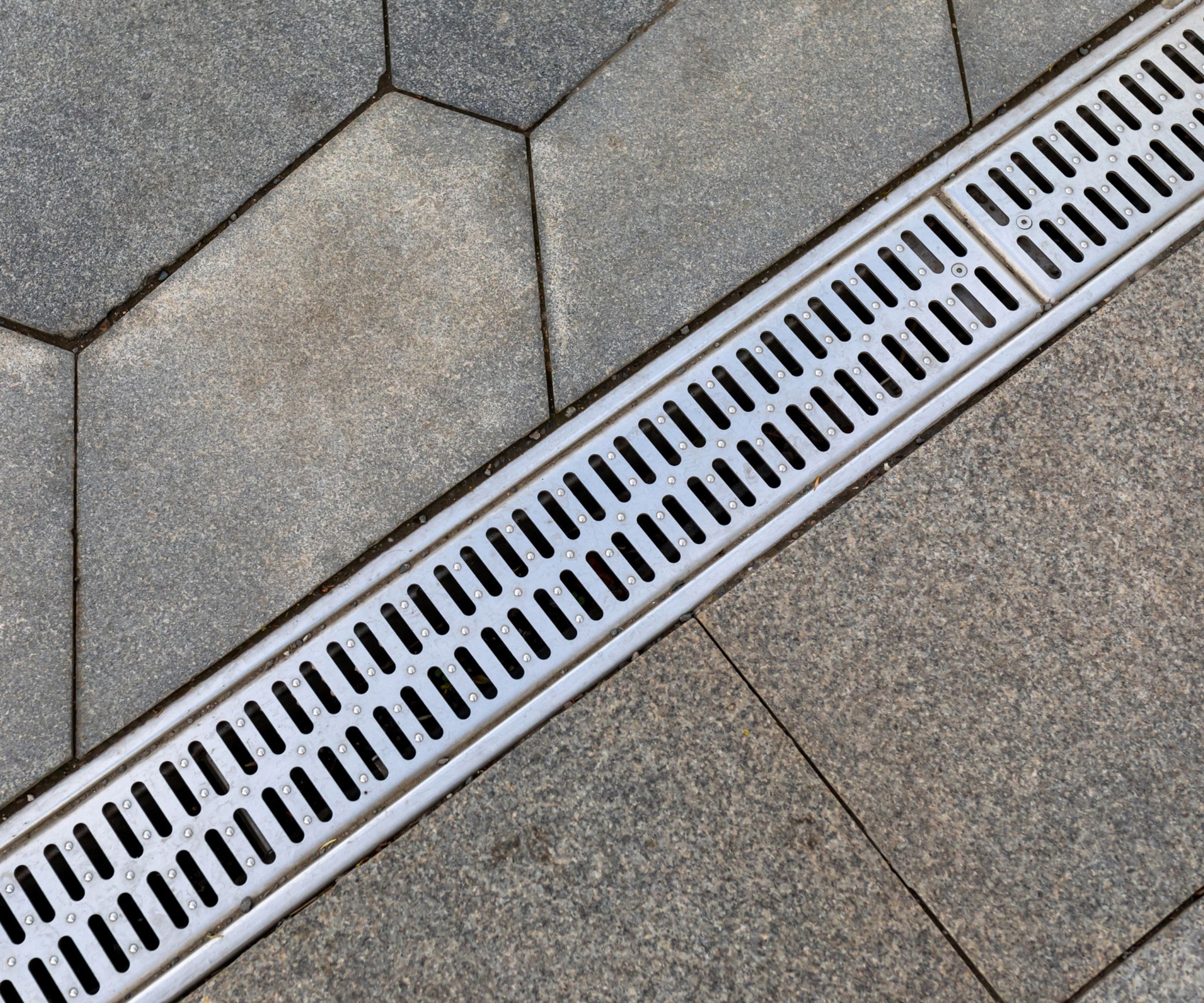
Trench drains are classic drains - you probably walk over a dozen of them a day without noticing. They are small, narrow trenches covered with a metal or plastic grate. They're the best way to deal with water pooling around the foundations of a home or on a patio. Like swales, they're easy to fix if they clog, because you can take off the grate and fish leaves or other debris out of the trench.
The problem with trench drains, however, is that they're usually only installed on patios, or at the points where a patio meets a lawn. This means that they can't always alleviate waterlogged lawns. If your waterlogging issue happens where your patio meets the lawn, a trench drain is a great way to move this water.
However, if you have standing water out in the middle of the lawn, a trench drain won't help you. Trench drains are also pretty ugly. You can find decorative trench grates like this at Home Depot, but they're all fairly utilitarian, and they can make a backyard feel a little corporate.
Most of these solutions will only help with waterlogged lawns. If you have another drainage issue, taking a look at wide range of drainage ideas out there could offer another solution. French drains can be great, but they only really work for lawns.

As a gardens and lifestyle contributor, Alex makes sure readers find the right information to help them make the best purchase. Alex got his start in reviewing at the iconic Good Housekeeping Institute, testing a wide range of household products and appliances. He then moved to BBC Gardeners’ World Magazine, assessing gardening tools, machinery, and wildlife products.